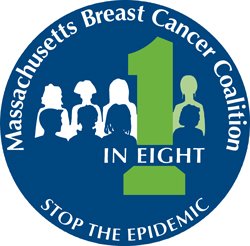On February 21st, Massachusetts Breast Cancer Coalition attended a presentation at Harvard University by Executive Director of the Green Science Policy Initiative, Arlene Blum, PhD, to discuss the potential impact of California’s new flammability standards on Massachusetts. Our sister organization, Silent Spring Institute, helped to organize this meeting and Research Scientist Robin Dodson presented findings of their flame retardant research.
As you may know, California’s new flammability standard (TB 117-2013) went into effect in January 2014. Since flame retardant chemicals have been detected at high levels in our homes and bodies, and have been linked to health problems including cancer, infertility and birth defects, this change is an environmental health victory!
The new standard changes the way furniture is tested for fire resistance. Rather than requiring that the inner upholstery withstand an open flame for 12 seconds (resulting in the use of high volumes of chemical flame retardants), the new standard involves a smolder test to the surface of the furniture. Most importantly for our health, the new standard was designed to reduce the reliance on chemical flame retardants and included exceptions for all baby products so they will never be treated with chemicals to meet a fire standard.
What does this mean for Massachusetts?
The old California standard had become the de facto national standard: rather than reformulating products state by state, manufacturers often sold CA TB 117 compliant furniture throughout the country. Many other areas of the country have adopted California’s old flammability standard, including the Massachusetts statewide regulatory agency, the Division of Fire Safety.
To complicate matters and add fuel to this regulatory “fire,” the Boston Fire Department requires compliance with a separate California flammability standard: TB 133. Like TB 117 and TB 117-2013, TB 133 is a flammability testing procedure, but one used specifically for the furnishings of public spaces. It is not a component test like the old TB 117 which tested only the inner upholstery. According to TB 133, the entire piece of furniture must withstand ignition from a gas burner inside a testing chamber.
Again, other municipalities (including Massachusetts as a whole) have adopted this standard. However, unlike other municipalities, Boston has been vigilant about enforcing this standard and offers no exceptions for public buildings fitted with sprinkler systems. It has been hypothesized that, as a result, chemical flame retardant use is widespread and prevalent in this area.
Bart Shea, Deputy Chief and Fire Marshall of the Fire Prevention Division of the Boston Fire Department, says, “The state will allow a reduction from TB 133 to TB 117 in buildings protected by quick response sprinklers. That is not an allowance that is recognized by the Boston Fire Department since we feel TB 133 is a more stringent and applicable test for public buildings and assemblies.”
According to Dr. Blum, some commercial furniture manufacturers have estimated that 40%-70% of TB 133 compliant furniture is distributed to Boston. Since compliance with regulation standards can be achieved in different ways, it is possible that the levels of flame retardants used in TB 133 compliant furnishings, and potential exposure, could be much higher (researchers at Silent Spring Institute hope to test this hypothesis in the future).
Now that TB 117-2013 has gone into effect in California, and there is growing support for a movement away from the use of chemical flame retardants, authorities in Massachusetts and in the city of Boston must decide whether to revise their own fire safety practices and how. As this process unfolds, MBCC representatives will continue to attend meetings and remain up-to-date on our progress. When necessary, we will make our voices heard in favor of the movement away from chemical flame retardant use.
 Massachusetts was a leader in environmental health policy with the passage of the Toxics Use Reduction Act in the 1980s. We would like to see this legacy continue with respect to everyday exposures to toxins linked with breast cancer and other diseases.
Massachusetts was a leader in environmental health policy with the passage of the Toxics Use Reduction Act in the 1980s. We would like to see this legacy continue with respect to everyday exposures to toxins linked with breast cancer and other diseases.
Join forces with firefighters on Thursday, March 27th to Give Toxics the Boot! Learn more from The Alliance for a Healthy Tomorrow.
Key Terms & Groups
Board of Fire Department: fire safety regulatory body for the state of Massachusetts.
Boston Fire Department: fire safety regulatory body for the city of Boston.
TB 117: Old California flammability standard which required that the inner upholstery of furniture withstand an open flame for 12 seconds. To meet the standard, manufacturers added a high volume of chemical flame retardants to the upholstery.
TB 117-2013: California’s new flammability standard as of January 2014. This standard is a smolder test to the outside of the furniture. It reduces the reliance on chemical flame retardant chemicals to meet the standard because manufacturers can use barriers of naturally flame resistant materials to protect the inner upholstery from igniting during the smolder test. Exceptions also exist for baby products so they are never treated with chemical flame retardants to meet the standard.
TB 133: A California flammability standard for furnishings used in public spaces. This standard requires that the entire piece of furniture withstand ignition from a gas burner inside a test chamber.

